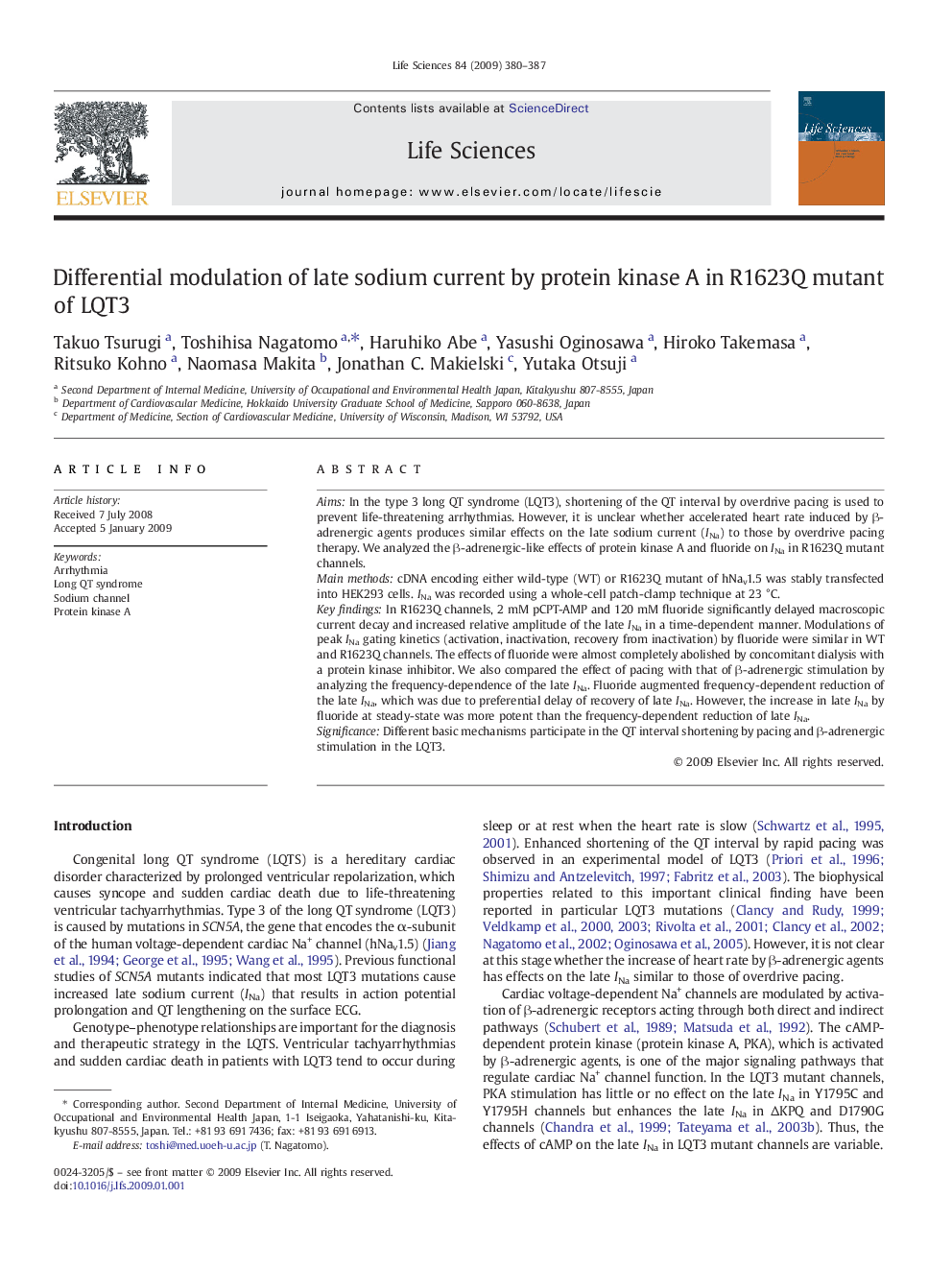| Article ID | Journal | Published Year | Pages | File Type |
|---|---|---|---|---|
| 2552147 | Life Sciences | 2009 | 8 Pages |
AimsIn the type 3 long QT syndrome (LQT3), shortening of the QT interval by overdrive pacing is used to prevent life-threatening arrhythmias. However, it is unclear whether accelerated heart rate induced by β-adrenergic agents produces similar effects on the late sodium current (INa) to those by overdrive pacing therapy. We analyzed the β-adrenergic-like effects of protein kinase A and fluoride on INa in R1623Q mutant channels.Main methodscDNA encoding either wild-type (WT) or R1623Q mutant of hNav1.5 was stably transfected into HEK293 cells. INa was recorded using a whole-cell patch-clamp technique at 23 °C.Key findingsIn R1623Q channels, 2 mM pCPT-AMP and 120 mM fluoride significantly delayed macroscopic current decay and increased relative amplitude of the late INa in a time-dependent manner. Modulations of peak INa gating kinetics (activation, inactivation, recovery from inactivation) by fluoride were similar in WT and R1623Q channels. The effects of fluoride were almost completely abolished by concomitant dialysis with a protein kinase inhibitor. We also compared the effect of pacing with that of β-adrenergic stimulation by analyzing the frequency-dependence of the late INa. Fluoride augmented frequency-dependent reduction of the late INa, which was due to preferential delay of recovery of late INa. However, the increase in late INa by fluoride at steady-state was more potent than the frequency-dependent reduction of late INa.SignificanceDifferent basic mechanisms participate in the QT interval shortening by pacing and β-adrenergic stimulation in the LQT3.
